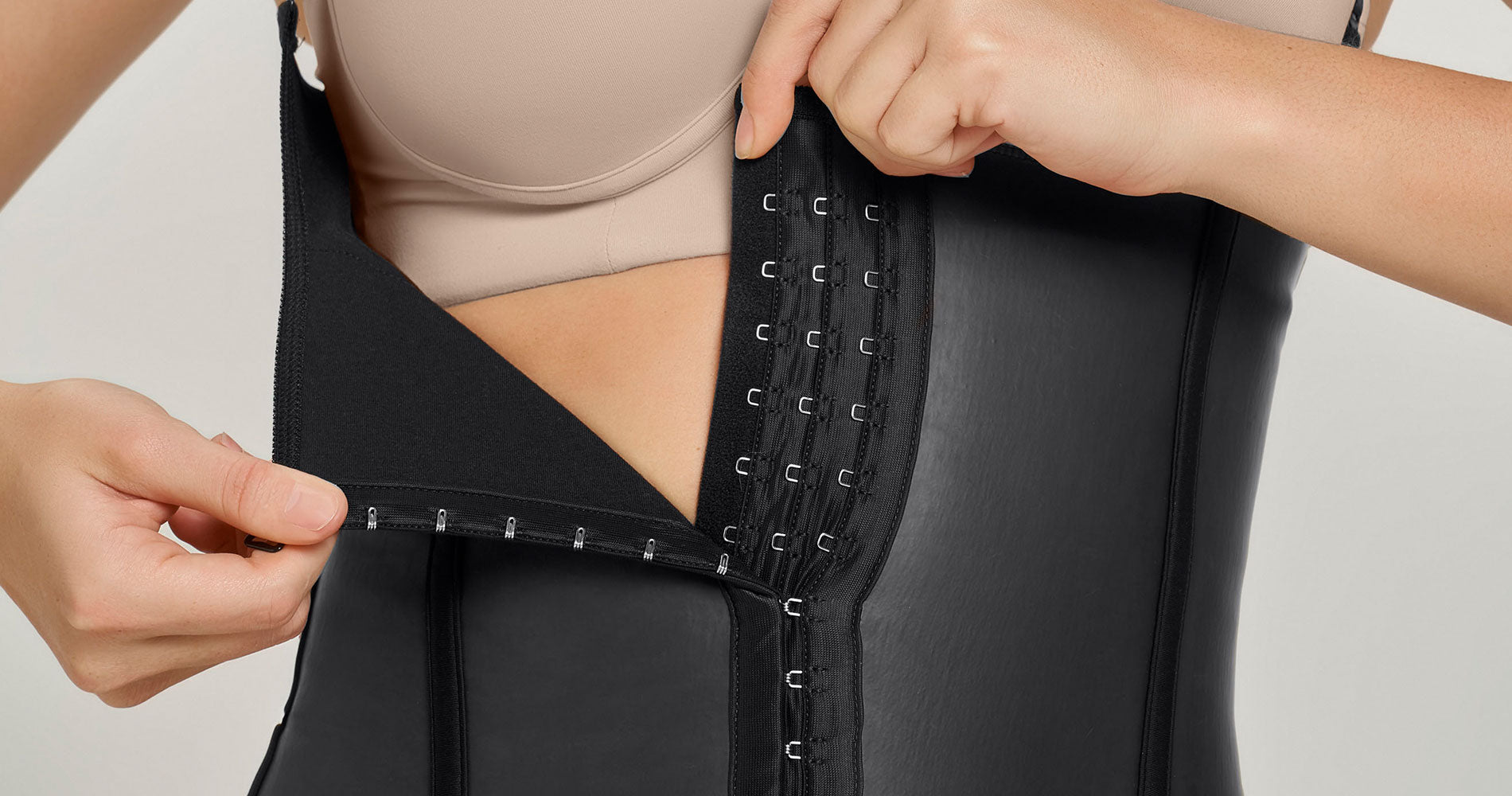A waist trainer can produce temporary effects. These garments can make your midsection appear narrower, but they don’t create lasting changes or true fat loss.
Waist trainers are designed to compress your torso and “train” your silhouette toward an hourglass form. In essence, they’re a modern take on the corset.
The popularity of waist trainers has been amplified by celebrities sharing photos and enthusiastic endorsements on social platforms. Just because public figures promote them doesn’t automatically mean they’re effective or risk-free.
Keep reading as we examine what waist trainers actually do and whether they carry any health hazards.

What is a waist trainer?
A waist trainer is an undergarment constructed from sturdy fabric and rigid boning, often metal or plastic. It fits around the waist and is tightened using laces, hooks, or Velcro.
It’s meant to be worn far more snugly than ordinary shapewear to create a visibly slimmer waist immediately. “Training” the waist, however, would require frequent use over months to attempt any lasting change.
Corsets have existed for at least five centuries. Early versions concealed much of a woman’s natural shape between the bust and hips. By the 1800s, corsets shifted toward emphasizing the female silhouette, aiming for an hourglass look with a narrow waist and fuller hips.
The ideal tiny waist size kept shrinking until discomfort and health concerns led to corsets falling out of favor.
What are the claimed benefits?
Hourglass shape
The immediate visual change can be striking, and the idea is that repeated use will teach your waist to keep that form.
However, according to the American Board of Cosmetic Surgery (ABCS) blog, a waist trainer won’t dramatically alter your body shape. Even for bodies that can temporarily assume that look, your waist trainer is unlikely to produce permanent results.
Weight loss
You might notice a small, short-term weight change while wearing a waist trainer, but that’s usually due to fluid loss from sweating rather than reduced fat.
Compressed stomachs can also make you eat less because of decreased comfort, but this is not a healthy or lasting method for slimming down. Even manufacturers of waist trainers recommend combining their products with exercise and a sensible diet.
Some advocates suggest wearing a trainer during workouts, but that isn’t advisable — it can limit your range of motion.
Plus, muscles and tissues require oxygen during exercise. Tight compression can hinder deep breathing and make sustaining a workout more difficult.
A small 2010 study investigated the practicality and cost-effectiveness of a very low-calorie diet and whether corset use helped maintain weight loss long term.
Researchers found the very low-calorie diet feasible after one year. They couldn’t assess corset effectiveness because most participants stopped wearing them due to discomfort.
Reduced appetite
It’s logical that stomach compression will make you feel full sooner, causing you to eat less.
However, eating too little may leave your diet deficient in essential vitamins and minerals. Restricting intake via a trainer is not a substitute for balanced nutrition.
Improved posture
Wearing a waist trainer can promote upright posture while it’s on. But prolonged or excessive use may weaken core muscles, potentially causing back pain and poorer posture over time.
What are the risks of wearing a waist trainer?
Breathing difficulties
Per the ABCS, a waist trainer can reduce lung capacity by 30–60%. This can make you uncomfortable and tire you out; if tightened excessively you could even faint.
It may also cause inflammation or fluid buildup in the lungs. Prolonged breathing restriction can have downstream effects on the lymphatic system, which helps clear toxins from the body.
Digestive troubles
Wearing a waist trainer compresses not just skin and fat but internal organs as well. The esophagus, stomach, and intestines can be impacted by the pressure.
Compression can push stomach acid up into the esophagus, causing severe heartburn. If you already have gastroesophageal reflux disease (GERD), a waist trainer can aggravate it.
Internal harm
Squeezing your midsection can displace internal organs like the liver and kidneys into atypical positions. Crowding organs may alter blood flow and impair organ function.
Over time, this could cause lasting organ damage, reduced muscle strength, and even fractured ribs.
When is it safe to wear a waist trainer?
You can wear a corset-style garment for a costume or special outfit without major risk — just avoid overtightening. Similar to shapewear or a girdle, an occasionally worn, not-too-restrictive waist trainer is likely harmless.
If you experience shortness of breath or lightheadedness, loosen or remove the garment immediately.
Are there safer ways to shape your waist?
There are healthier methods to improve your waistline.
- Balanced diet. Prioritize whole, minimally processed foods and sensible portions. Reduce sugary snacks, drinks, and heavily processed items.
- Regular exercise. Combine cardiovascular workouts with strength training to tone muscles and burn calories. A certified trainer can design a routine suited to your goals.
- Less restrictive shapewear. Choose undergarments that smooth your silhouette without limiting breathing. Some waist cinchers use flexible plastic boning to allow more movement.
- Consult your doctor. Discuss safe, evidence-based strategies for losing weight that won’t harm your health.
- See a specialist. If you’re considering targeted body changes, ask your physician for a referral to a board-certified cosmetic or plastic surgeon.
The bottom line
Waist trainers are unlikely to produce dramatic or lasting changes to your figure. If overused or cinched too tightly, they can cause health issues. The most reliable and healthful way to lose weight and sustain results is through a nutritious diet and consistent exercise.
Occasional use of a waist trainer probably won’t be harmful as long as it isn’t overly tight.
Discuss the safety and potential benefits of waist trainers with your primary care provider.


















Leave a Reply
You must be logged in to post a comment.